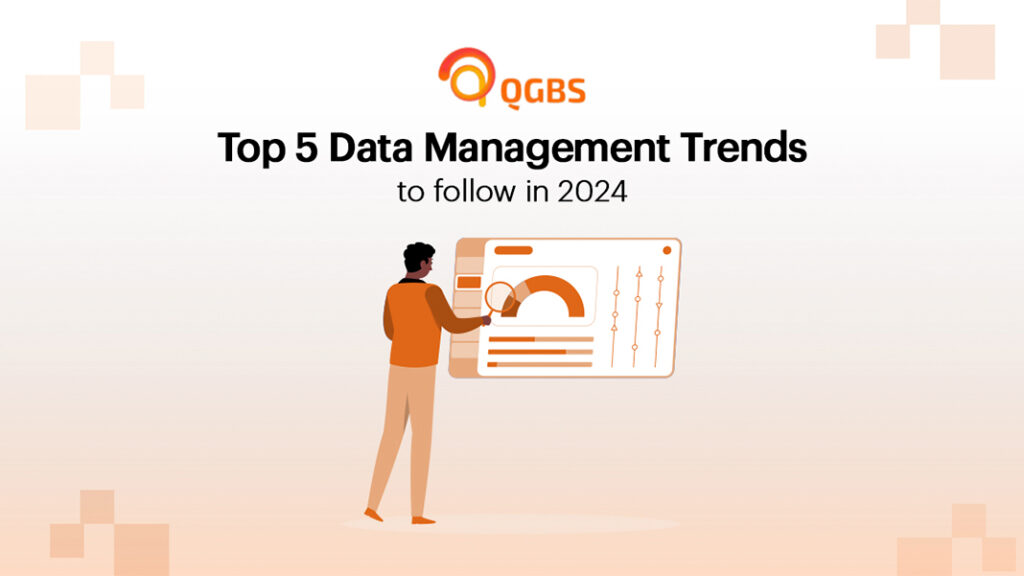
As you all know, these days, data management is more critical than ever. And because of that growth of data, businesses are trying to stay ahead of the curve to harness the power of information assets efficiently. But as we are moving towards 2024, several data management trends are emerging that are really promising & will revolutionize organizations by helping them know how to handle their data.
Still, people have less idea about the same, even as per the emerging knowledge about data monitoring tools. So, for that, let’s have a look at this interesting piece of information where you will learn about the latest trends.
With this, you will even get to know how you can use them in 2024 to stay competitive & innovative. Let’s jump in to learn about them:
Table of Contents
This is a new concept that decentralizes data management by treating data as a product. The approach contrasts with traditional centralized data management systems, where a single team handles all data-related tasks.
This traditional approach is important because it often leads to bottlenecks, as a single team won’t be able to efficiently handle the vast amounts of data generated across an organization.
Implementing Data Mesh requires a cultural shift & significant changes in organizational structures. For this, everyone uses technologies like:
& many more to ensure that consistency & quality across decentralized data products.
This is an architecture that provides a unified & consistent data management framework across various platforms, systems, & many more. The architecture mainly leverages metadata driven architecture to automate data integration, management, & even governance.
There are many benefits offered by this trend, & some of them are mentioned below:
Other than this, the implementation mainly provides benefits to those organizations that have complex data ecosystems that require multiple platforms & geographic locations for management.
To experience the benefits, there are many technologies that are used to enable the integration of this process:
Metadata Management: to create a unified view of data.
AI & Machine Learning: to automate data integration & make the appropriate implementation of AI in data management.
This process encompasses a set of technologies designed to protect the data during processing. These further ensure that sensitive data remains secure & private while still allowing computation & analytics to be performed.
Now, after learning about this trend, let’s have a look at which computation technologies help in making data management beneficial:
Homomorphic Encryption: This encryption allows for computations on encrypted data without even decrypting it.
Secure Multi-Party Computation: Here, through this computation, multiple parties join to compute a function over their inputs & keep them private.
After successfully knowing about the technology’s usage, let’s know why it’s important to be more aware & start taking advantage of this trend.
This computation provides the best solution by enabling secure data processing & ensuring that the data remains encrypted, so no one have to worry about anything. Due to this, if businesses or organizations want to have a fair chance, then they should take advantage of this computation.
The architecture mainly focuses on enabling seamless data management across a distributed environment. This platform even integrates data from various sources, whether on premises, in the cloud, or at the edge.
Would Get to Experience a Unified View: Through this, everyone will get to have a comprehensive view of data across the whole organization.
Experience Enhanced Security: By taking advantage of this architecture, people related to the organizations would be able to have the best security policies across all the data sources.
Organizations, after adapting the data fabric, will have to simplify their data management infrastructure. So, people should implement this, have better real-time analytics, and improve data accessibility, leading to more informed decision-making.
This management leverages the cloud’s scalability, flexibility, & advanced services to manage data more effectively. So, organizations should be more likely to move their data to the cloud, as the implementation of this is becoming really important.
Let’s have a look at the technologies that people can use to experience the benefits:
Serverless Computing: This enables running data management tasks without disturbing the management of server infrastructure.
Microservices: This technology helps break down data management trends related tasks into small & manageable services.
The information successfully delivers this idea to everyone that as we move towards 2024, we have to stay uptodate with technologies as well. So, for that, they can take advantage of these technologies & implement them so that organizations and businesses will have better success.